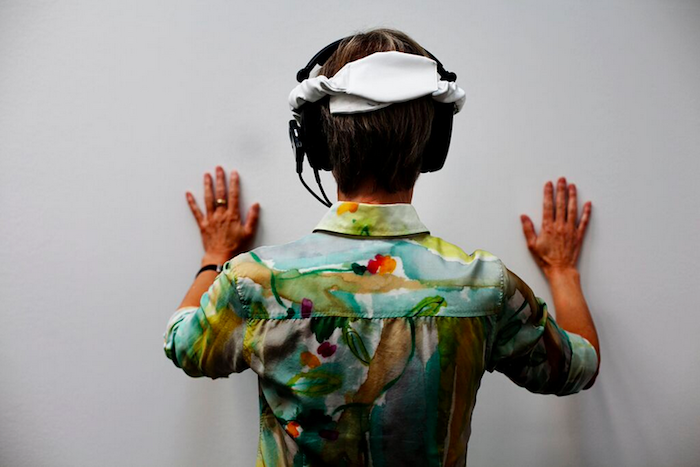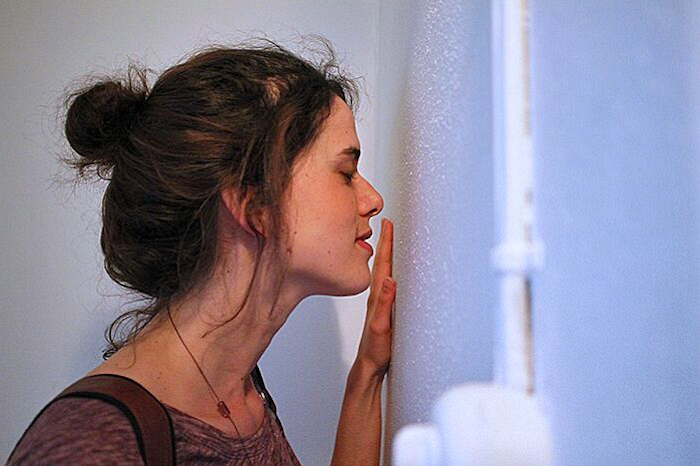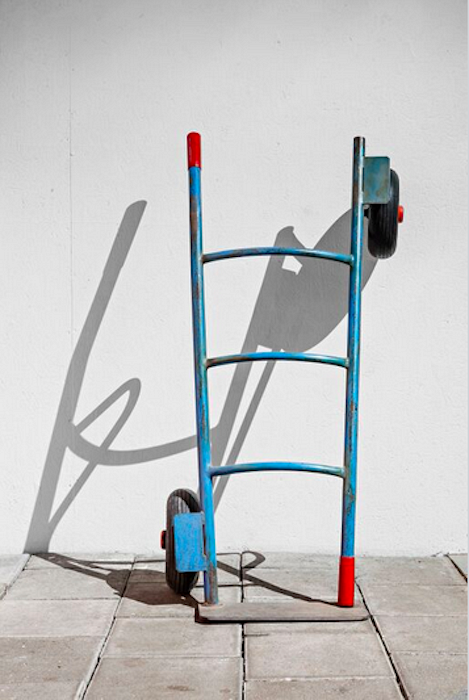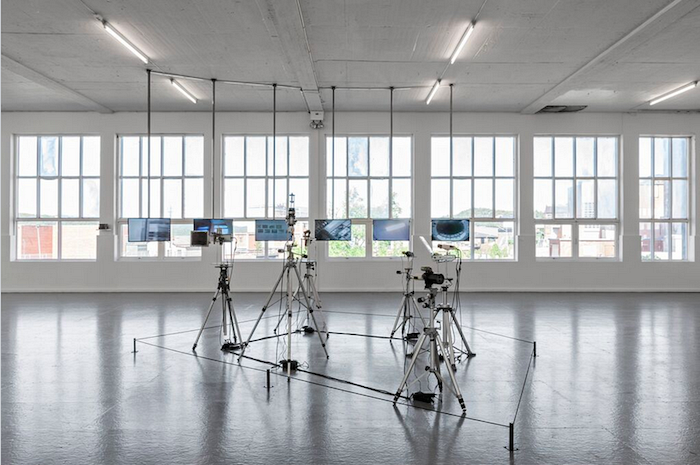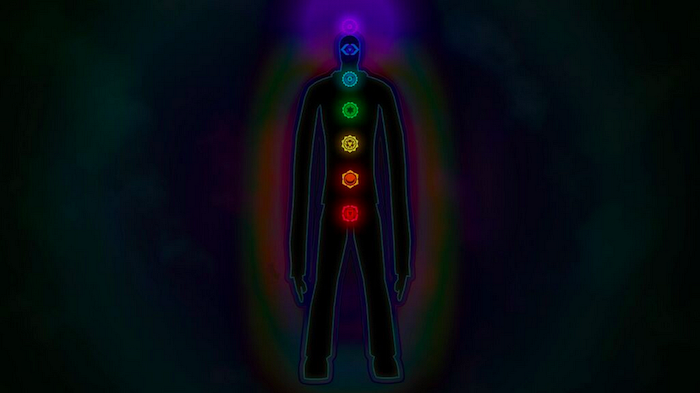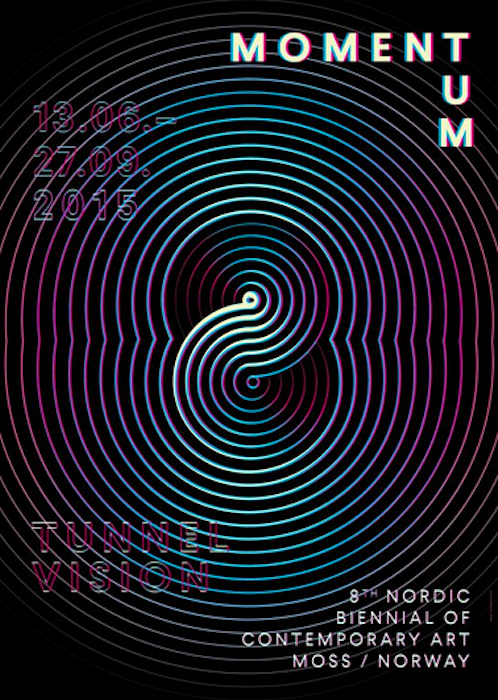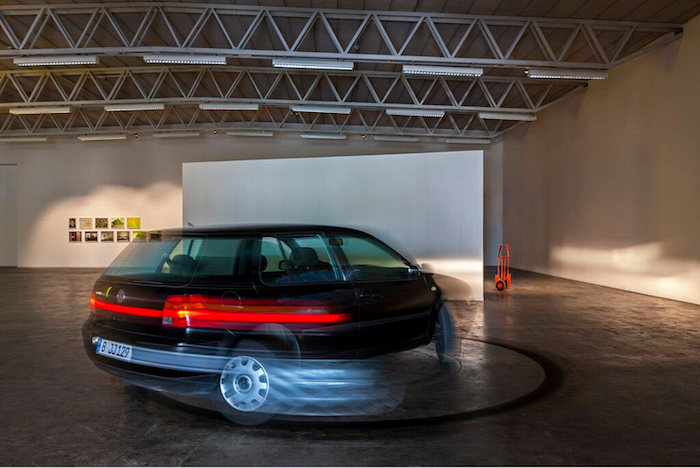In Kafka’s “The Burrow” (1931), one of his last unfinished short stories, the reader is taken through a network of tunnels, built by the constructor-narrator, which constitutes his home, his fortress, and his life’s obsession. The channels ploughed by his fixated thoughts seem to merge with those of his subterranean burrows, exemplifying Kafka’s own process as a writer. The story illustrates a mind narrowing towards a single idea, a “tunnel vision” that is one of the lines of thought pursued by the curators of “Momentum 8.”
This year’s edition of the Nordic Biennial in Moss, Norway, is further inspired by such subjects as the personalizing effects of Google algorithms, drugs and capitalism, conspiracy theories, theosophy, Nordic seclusion, Virginia Woolf, and Edvard Munch’s retreat in Moss. Curators Jonatan Habib Engqvist, Birta Gudjonsdottir, Stefanie Hessler, and Toke Lykkeberg have convened a list of 25 artists, a smaller number of participants than in previous editions, allowing a greater focus on single works. Across the biennial’s two venues—Momentum kunsthall and Galleri F15—they strike a subtle, rhythmic arrangement of progress and regression, drops, losses, and accelerations, featuring immersive environments, rotating devices, and synesthetic experiences that mess with the visitor’s perceptions. Visions reappear as some works are present in, or overlap onto, others. The experience is akin to being under the influence.
“Come.” Our eyes and ears are covered and a guide grabs our hands, thrusting our bodies into virtual spaces traversed with barely perceptible scattered lights and reverberating sounds. We turn our heads to figure out where the footsteps are leading us. “Come.” We touch the walls, smell a fragrance and get cold in the mist. “Come.” We feel the warmth of the sun on our faces; hands drag us inside a car and we start to drive. The fiction is so effective that, after 20 minutes, I didn’t realize the car was moving backwards. This experiential work of art, Lundahl & Seitl’s Symphony of a missing room (2009–2014), functions as a guided museum tour that adapts to its host venue by integrating elements of each place. In Virginia Woolf’s “A Room of One’s Own” (1929), the narrator wanders through the history of women and literature as she meanders through the grounds of Fenham College, Oxbridge. It is a synesthetic experience in which shapes, colors, smells, and tastes seem as significant to the flow of her ideas as the texts to which she refers. This transition between inside and outside in Symphony is comparable, emphasizing the fictional spaces created by the collision of the senses, and symptomatic of the shifting dynamic between center and periphery throughout the biennial.
One route through the exhibition begins sightless, amidst the mist of Fujiko Nakaya’s Glacial Fog Falls. Fog Installation #01494, Momentum Biennial 2015, Moss (2015), and moves gradually towards its outside, incorporating other works from the biennial, such as MOLECULE MOVX_015 (2015), the scent created by Sissel Tolaas, and the multi-part soundtrack—one section of which is titled like a moment ago, when we just stood here (2015)—by Swedish electro-pop musician Zhala.
Sofia Hultén’s modified tools—Indecisive Angles (VI) (2015)—can be found at the entrance of the kunsthall, at the bookshop, or inside Galleri F15, as if littering a lost trail, a narrative that is impossible to follow; in our disorientation we might enter the forest of Phantom (kingdom of all the animals and all the beasts is my name) (2013–2015), Daniel Steegmann Mangrané’s Oculus Rift virtual reality installation, or the journey can stretch right back to Oslo, to the 1920s Emanuel Vigeland Mausoleum included on the biennial’s map.
The journey might even have started before the biennial opened. The three films produced by Edward Shenk (Momentum 8 trailer, parts 1, 2 & 3, all 2015) were available to view on YouTube prior to its beginning, and an app developed by artists Valia Fetisov, Dzina Zhuk, and Nicolay Spesivtsev could be downloaded onto our phones (Paranoiapp, 2015). Through their use of networked devices, these works occupy physical spaces and temporal fields beyond the biennial’s own limits.
The Möbius strip on Ariane Spanier’s logo for “Momentum 8” evokes the perpetual stream entwining the works, and the repetitive circles that shape the exhibition, fleetingly symmetrical like the orbits of stellar bodies. Jugendbewegung (2015) by Julius von Bismarck consists of a modified car rotating on itself, inside which the artist sat during the opening, engineering his own movement. On the other hand, the rotating devices of Steina Vasulka’s Machine Vision (1978) create a panoptic perspective on the exhibition space and its occupants, proposing an eerily non-subjective point of view. This fragmentation of the gaze disconnects us from reality, a mechanism that spurs paranoia.
Individuals suffering from paranoia are haunted by obsessive thoughts that distort logic. Edward Shenk’s trailers build conspiracy theories of collusion between the Nordic Biennial, Statoil, the Svalbard Seed Vault, and Völuspa, a mythological Nordic prophetess. A climate of fear develops throughout the exhibition, emphasized by a recurrent, queer smell—somewhere between tree essence, animal fat and petroleum residue—and the rumbling music that emerges from the heating pipes. Outside Galleri F15, Joanna Lombard’s installation Exclusion (2015) amplifies women’s laughter over a circle marked on the ground in embers, raising the specter of a midsummer witch burning, while Minna Henriksson’s research on the supposed omnipresence of the swastika in the Nordic region (Hidden, 2012) seems to bring an appalling parallel history out from the shadows and into the light.
Several works reflect on how healing processes designed to overcome states of fear can reveal themselves as closed systems undermining the possibility of closure. Lombard’s Orbital Re-enactments (2010/11)—a four-channel video installation—stages healing scenes inspired by childhood memories in the commune of Ljusbacken, Sweden, and features disturbing images of feces, blood, and nudity. Brody Condon’s The Zeigarnik Effect (2015) is one of the most compelling works of the show. It consists of a live stream from a session of Live Action Role Play (LARP), in which a group of actors cloistered in an apartment near the kunsthall participated in a seemingly staged mix of Gestalt therapy, electric acupuncture, and interaction with a sculpture.
I had to let myself go with it, as on another kind of trip, alternating between states of discomfort and bliss. “Momentum 8: Tunnel Vision” can be experienced as a game book, offering visitors a selection of different paths to take, imposing an altered state of consciousness and assuming that they can be manipulated—as in Cordon’s LARP session. Strangely, they all end up in the same spot, as in a maze.
